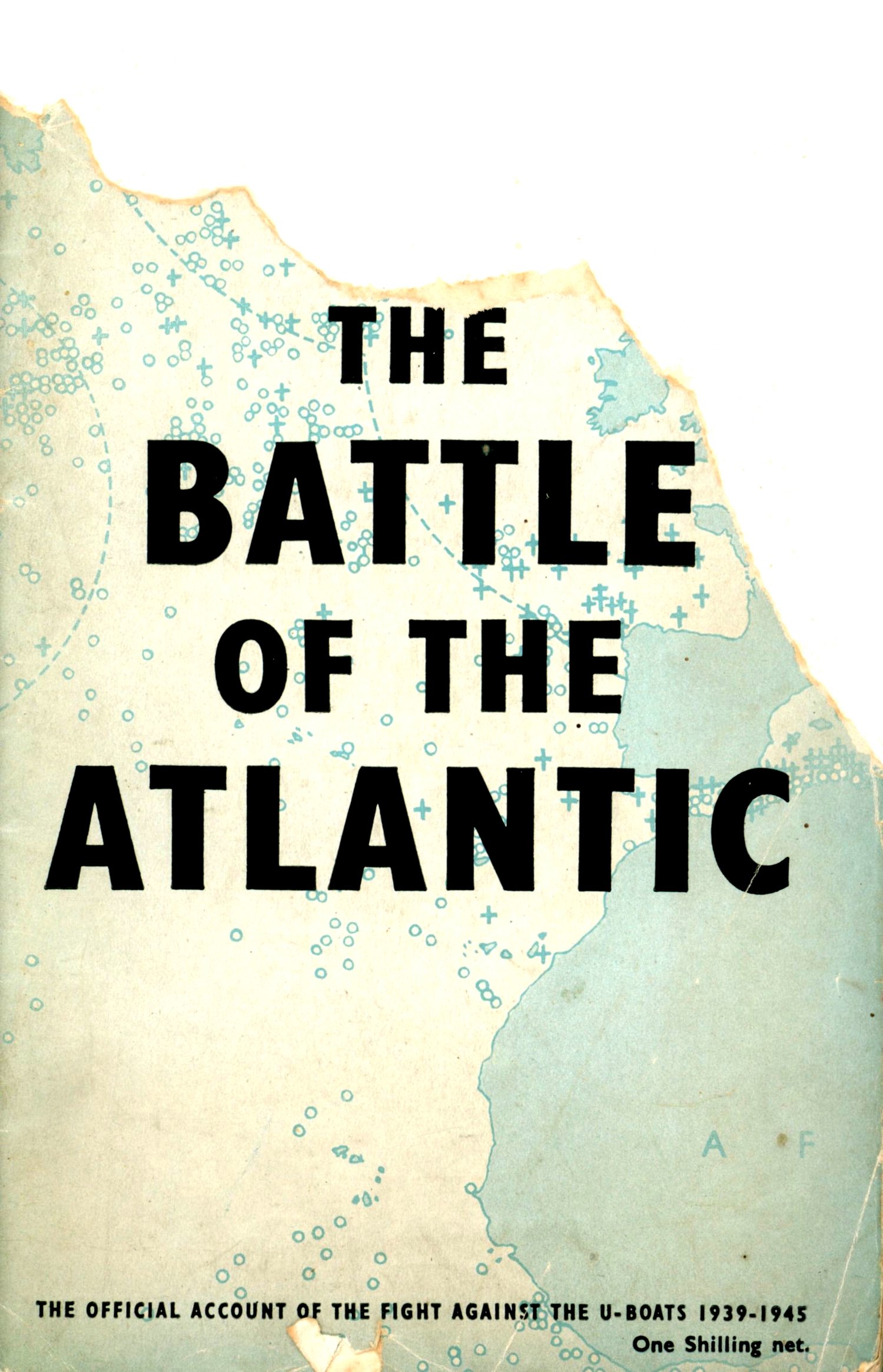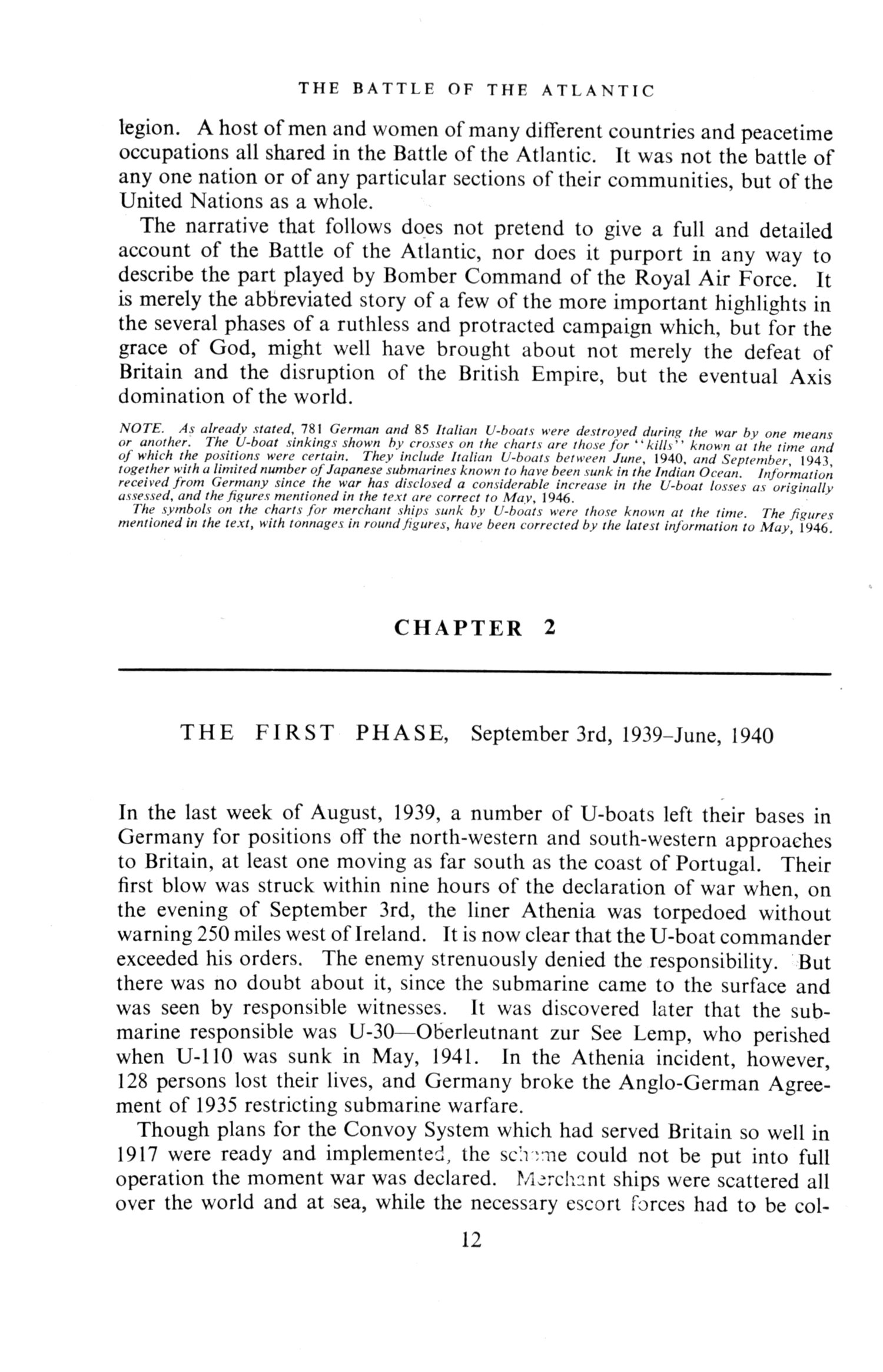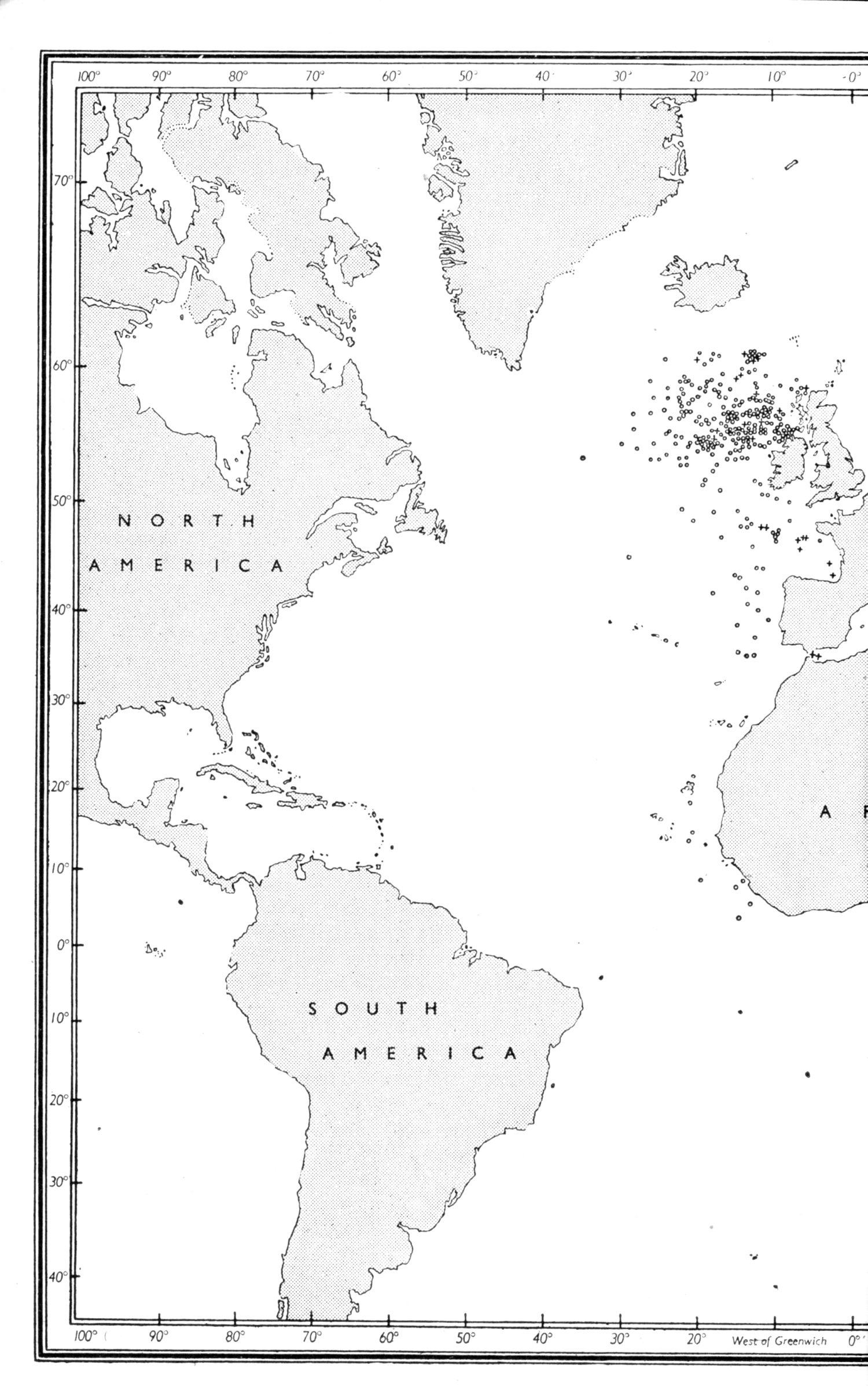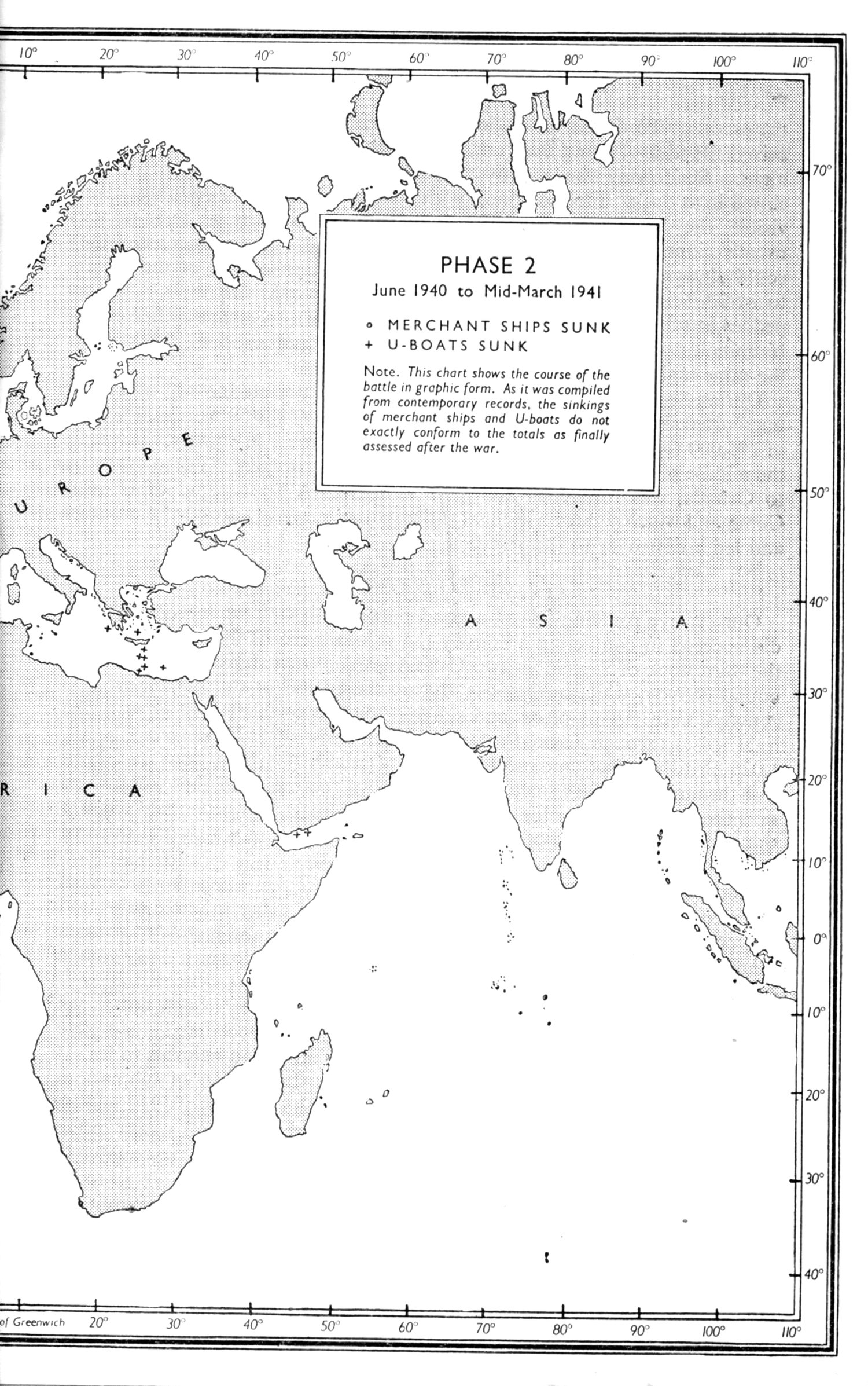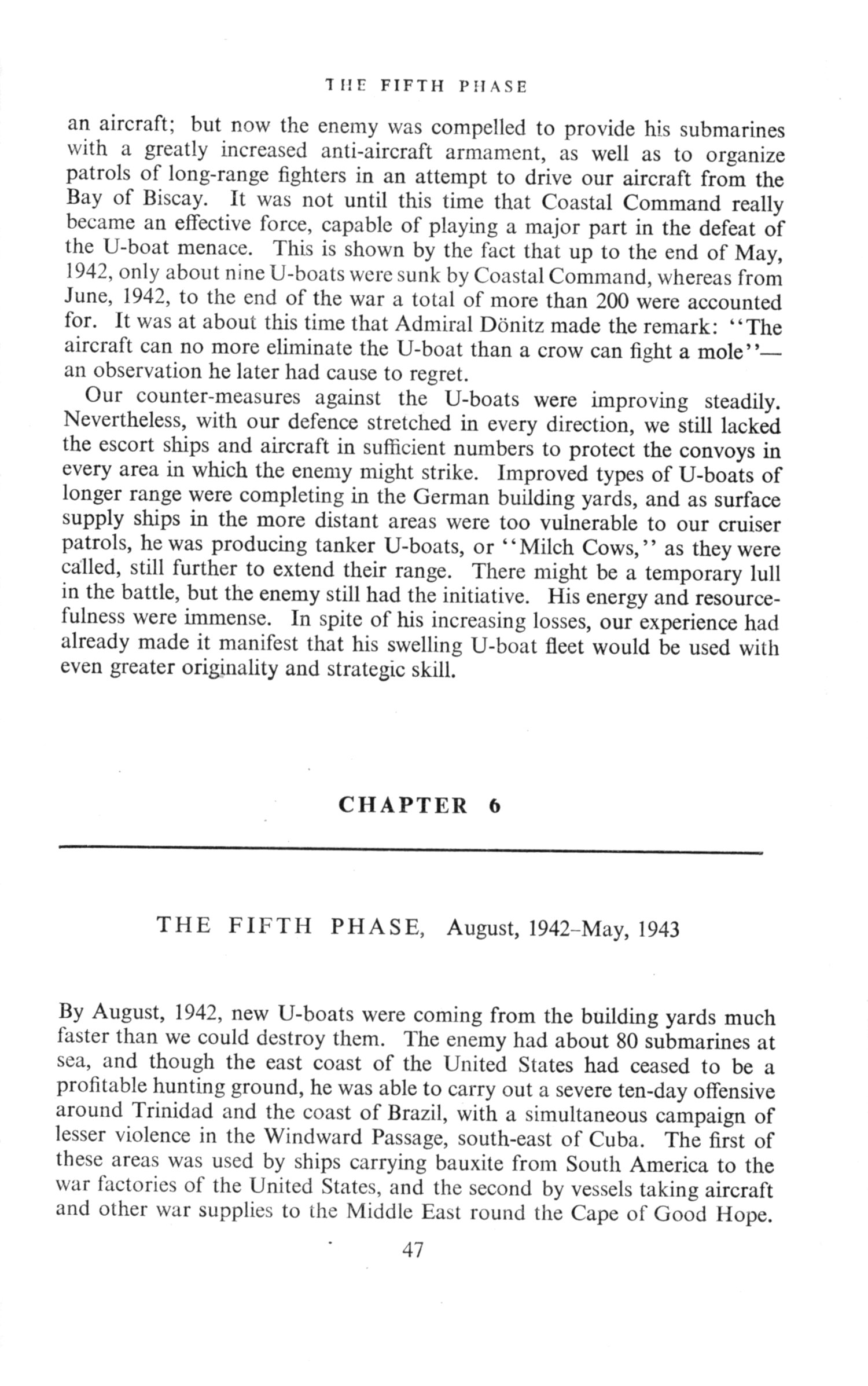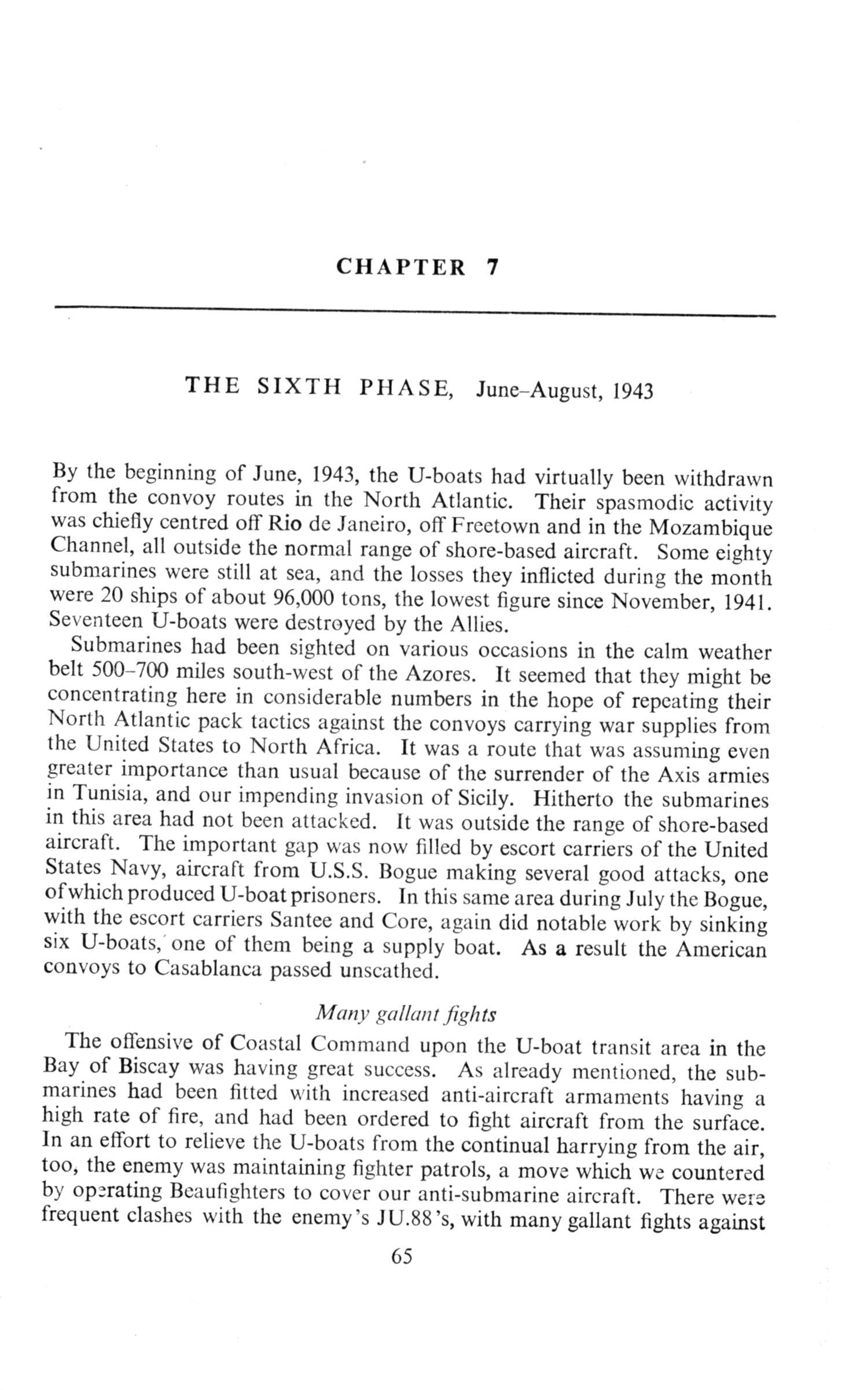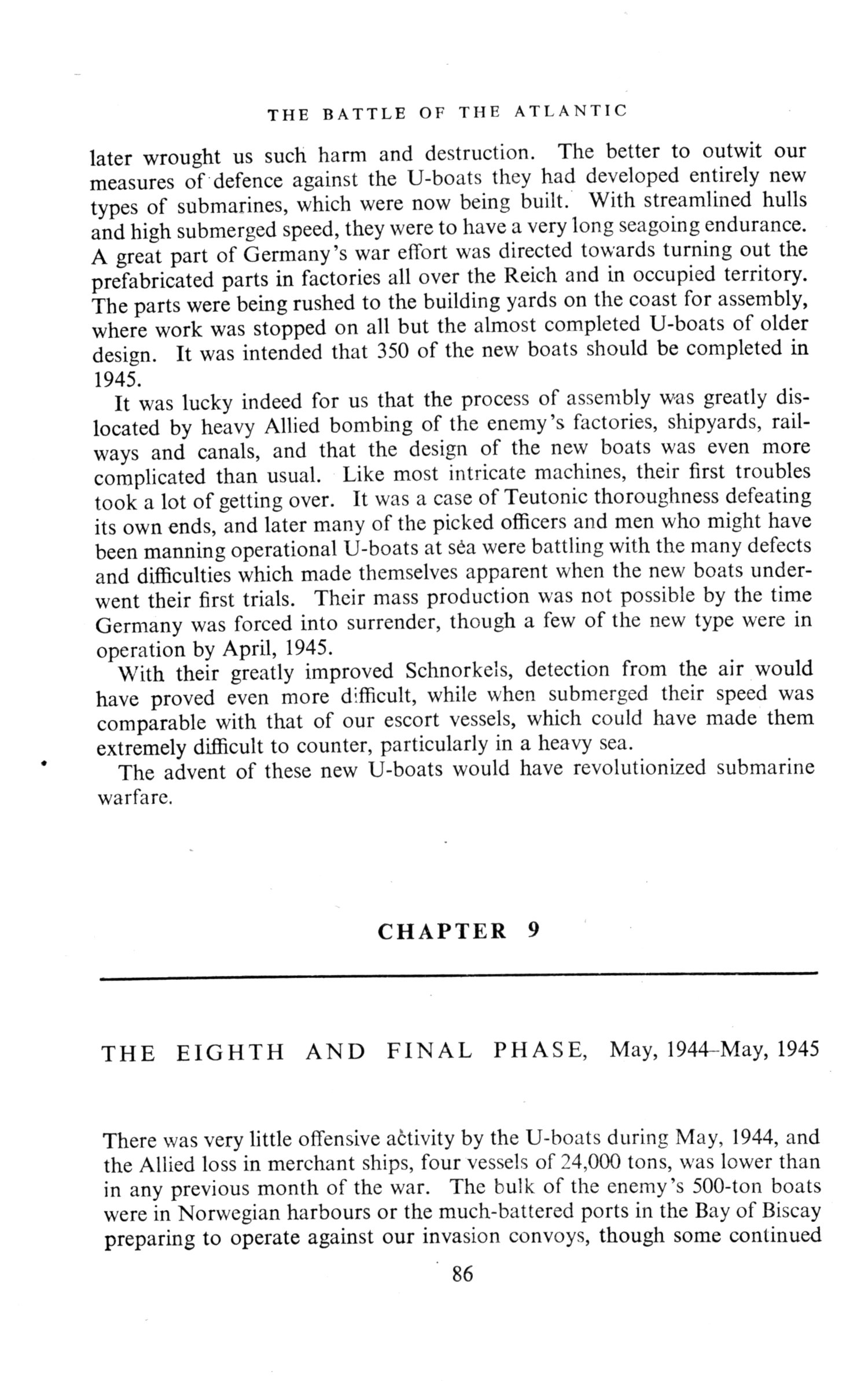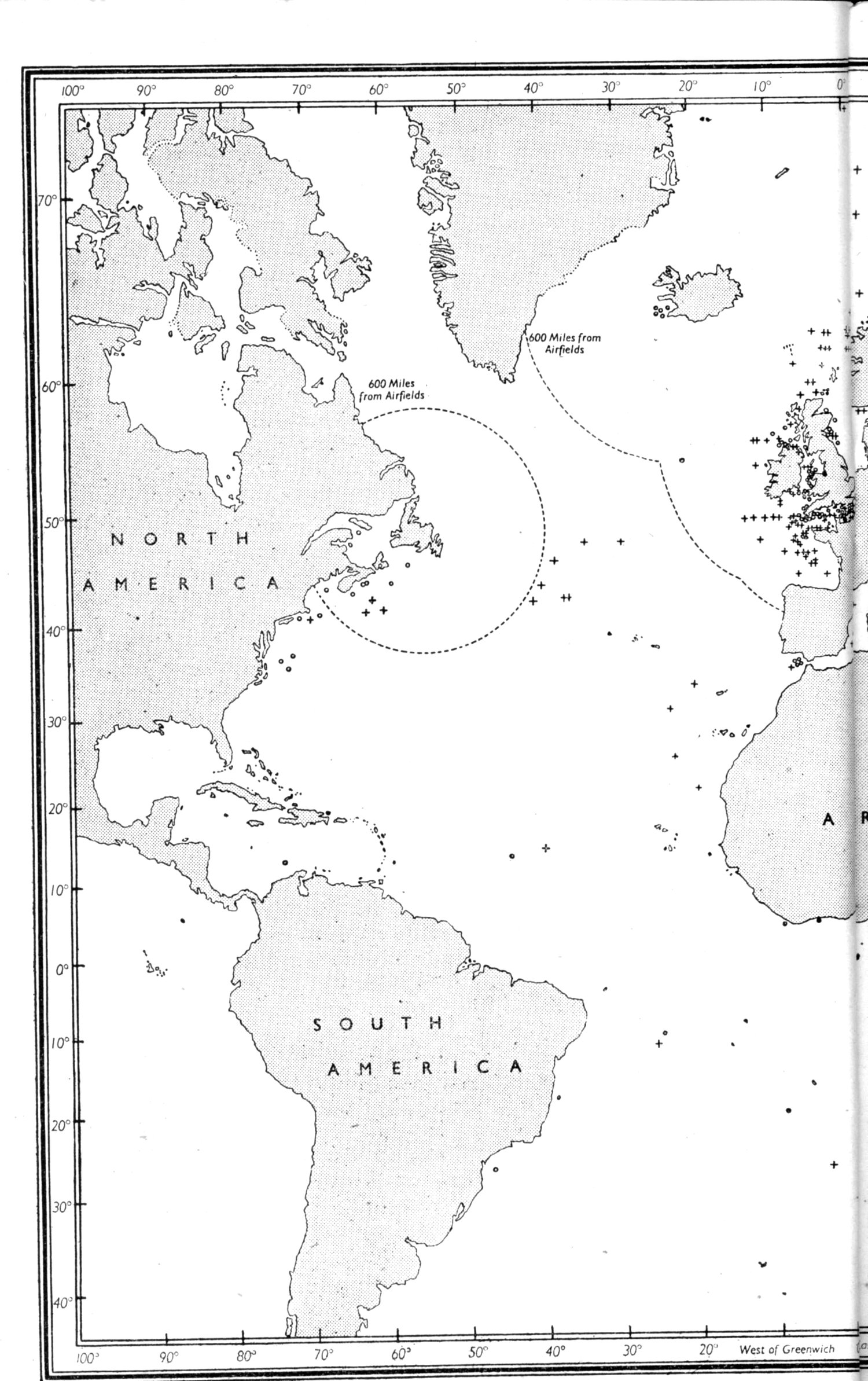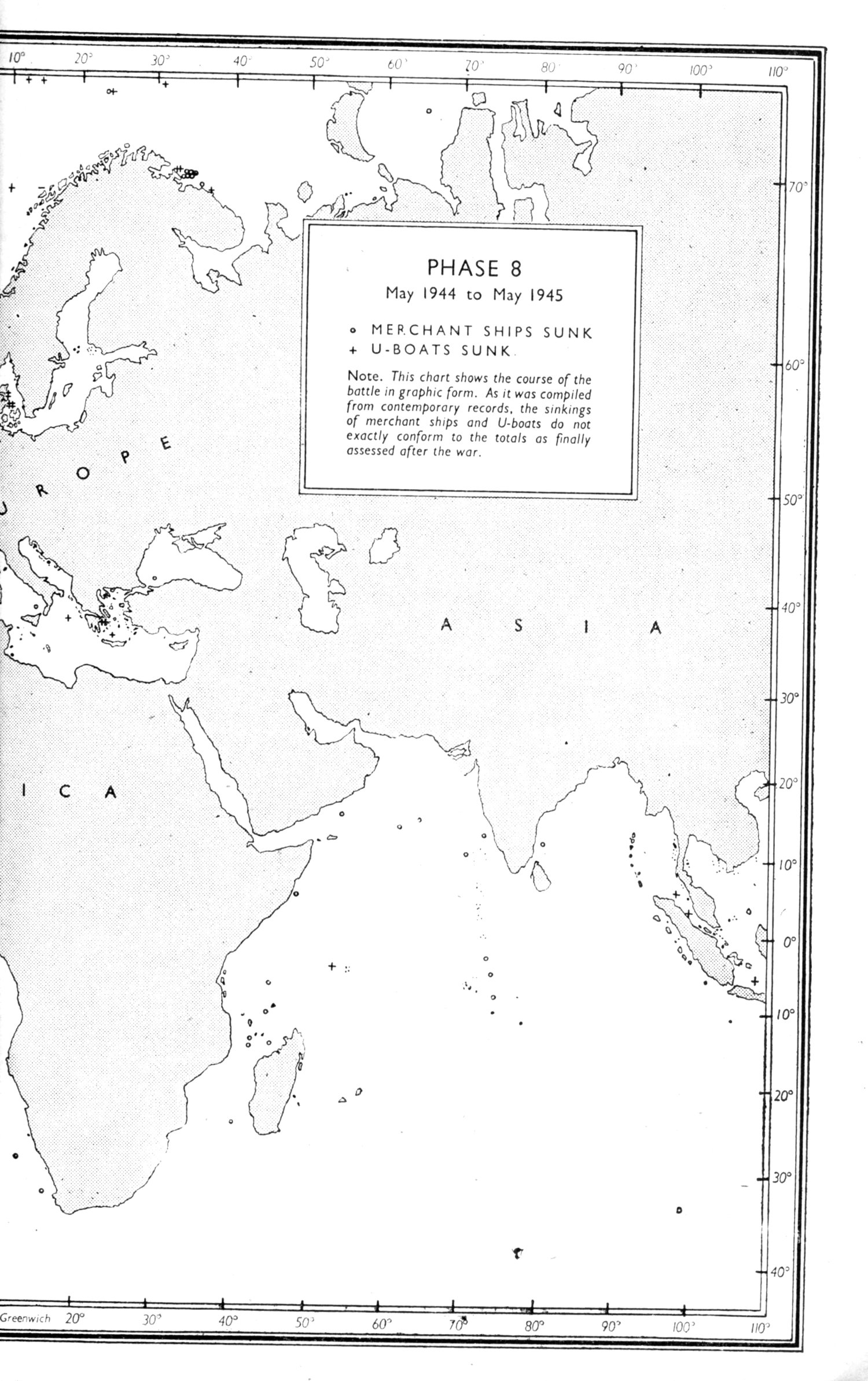The Battle of the Atlantic: The Official Account of the Fight Against the U-Boats 1939-1945
Prepared for the Admiralty and the Air Ministry by the Central Office of Information
HMSO, London, 1946
For the space of sixty-eight months the Battle of the Atlantic raged with ruthless but varying intensity. It started with the sinking of the Athenia west of Ireland less than twelve hours after the outbreak of war on September 3rd, 1939, ended with Grand-Admiral Donitz’s signal of May 4th, 1945, ordering his U-boats to cease hostilities and return to base, followed four days later by the unconditional surrender of Germany. Until the very end the German U-boat arm fought with discipline and efficiency. There was no relaxation of effort or hesitation to incur risks. Indeed, on the night before Germany’s surrender, two merchant ships were sunk near the entrance to the Firth of Forth, and a minesweeper in Lyme Bay.
Had the U-boat war continued for any appreciable period, there is little doubt that it would have imposed an increased and severe strain upon Allied resources. In spite of the dislocation and interruption caused by the severe Allied bombing of the German building yards, bases, communications and assembly plants, which had a very considerable effect in delaying output, the U-boat fleet would have increased substantially in numbers and power. New and improved types of boats were also coming into operation. Their war potential was not exhausted when the victory of the Allied arms brought about the downfall of Nazi Germany.
In 1940 Grand-Admiral Donitz had said: “I will show that the U-boat alone can win this war … nothing is impossible to us.” In an order of the day issued simultaneously with his order to cease hostilities, he explained that a crushing superiority had compressed the U-boats into a very narrow area and that the continuation of the struggle was impossible from the bases that remained. But the U-boats nearly succeeded. The anti-U-boat war of 1939-45 was one of the most vital, protracted and bitterly fought sea and air campaigns in which the British Empire and her Allies have ever been engaged.
It is hardly necessary to point out that the severance of our Atlantic supply lines would have brought us to our knees through the eventual starvation of our war industries and population. Our power to continue tons of fuel held in reserve in the country had been expended by our warships and aircraft. Unable to bring in supplies of fuel from oversea, we should have seen our Navy and Air Force haltered and finally immobilized, with the hope of building up our strength for an offensive anywhere in Europe gone forever. Disaster, comparable to that of France in 1940, would have stared us in the face.
A debt we can never repay is due to the men of the Merchant Navies, who, true to their fine tradition, and with a steadfast courage, devotion and endurance, refused to be intimidated by the heavy toll of sinkings and the threat of their ships being blown to pieces in one of the stormiest oceans of the world. An extra meed of praise is due to those who manned the ships carrying ammunition and explosives, and the tankers which carried the highly inflammable fuel and aviation spirit which ensured the mobility and operation of our warships, our aircraft and our mechanized armies in every part of the world. Of the more than 30,000 casualties to the personnel of the Merchant Navy caused by enemy action, some 23,000 were brought about by U-boats. A large proportion of the casualties to naval personnel, both in escort vessels and larger ships, were caused by U-boats.
Contents
1. War Against the U-Boats
2. The First Phase: September 3rd, 1939 to June 1940
3. The Second Phase: June 1940 to mid-March 1941
4. The Third Phase: Mid-March 1941 to December 31st, 1941
5. The Fourth Phase: January to July 1942
6. The Fifth Phase: August 1942 to May 1943
7. The Sixth Phase: June to August 1943
8. The Seventh Phase: September 1943 to April 1944
9. The Eighth And Final Phase: May 1944 to May 1945
8 maps

